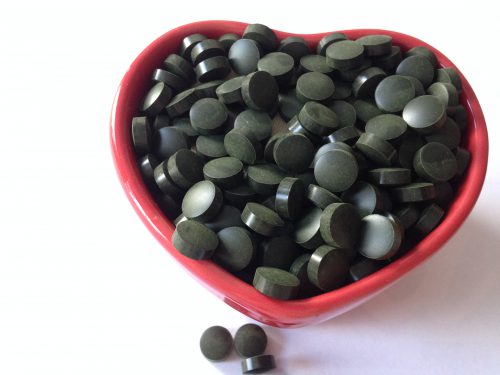Spirulina is a winner as algae is the best nutritional and nutraceutical product. If we compare Spirulina with Chlorella, we will see that Spirulina has a few more qualities. These conditions make Spirulina superior to other algae.

Differences between Spirulina and Chlorella
Chlorella traits
Chlorella is a tiny monocellular alga. Her size is 5 microns.
The harvesting of Chlorella requires a high-speed centrifuge. It means that electric power and labor would be involved in the process of Chlorella’s cultivation.
Chlorella has a thick cellular membrane. Humans can not digest Chlorella quickly.
Chlorella is cultivated in lightly acidic conditions. The carbon dioxide generated by Chlorella is high in volume. A minuscule amount of carbon dioxide is utilized and dissolved.
Spirulina’s traits
Spirulina is a multicellular alga. Spirulina is one hundred times bigger than Chlorella. It means that harvesting can be done using simple cloth: no centrifuges, electric power usage, and labor.
Spirulina has a thin membrane. Spirulina can be digested in 16 hours using proteinase pepsin. The percentage is 85 %. Spirulina is twice as easily digestible compared with Chlorella.
Spirulina can grow in very alkaline conditions. It means that carbon dioxide gas is transformed into hydrogen carbonate ions. These ions remain in the alkaline culture solution.
Spirulina can absorb carbon dioxide and hydrogen carbonate ions as a carbon source.
The high utilization of carbon dioxide keeps the atmosphere clean and abundant with oxygen.
Better digestibility, low production expenses, high efficiency in utilization of carbon dioxide, cultivation in alkaline waters, and high temperatures in Africa allow Spirulina to stand out from other algae.
Spirulina is a winner
By no means Chlorella is a valuable alga. Germans used Chlorella during the first war. It was a food shortage. Scientists proposed to use Chlorella as a food source. Chlorella was better than yeast because it needed just air, sunlight, water, and a few minerals.
The cultivation of yeast required sugar. Later on, Germans abandoned research on Chlorella, but the scientific community got interested in the algae Chlorella.
Scientists from the USA and researchers in Japan started research on mass cultivation. The reason for analysis was the constant food crisis in the world.
However, Spirulina’s traits show superiority against other algae.
Better digestibility, low production expenses, high efficiency in utilization of carbon dioxide, cultivation in alkaline waters, and high temperatures in Africa allow Spirulina to stand out from other algae. Spirulina is a winner.
Therapeutic abilities of Spirulina
Researchers from Japan decades ago reported positive effects of Spirulina in the cases of diabetes, pancreatitis, liver diseases, weakened immune system, anemia, vision problems, and so on.
The recently published book Spirulina in Human Health and Nutrition provides evidence from scientists and doctors. The results are impressive. They show that Spirulina is a nutraceutical food supplement.
Dr. Christopher Hills called Spirulina miraculous algae. Spirulina is a winner because her quality and usage outperform other algae.
How about you? Did you try to use Spirulina as a food supplement?